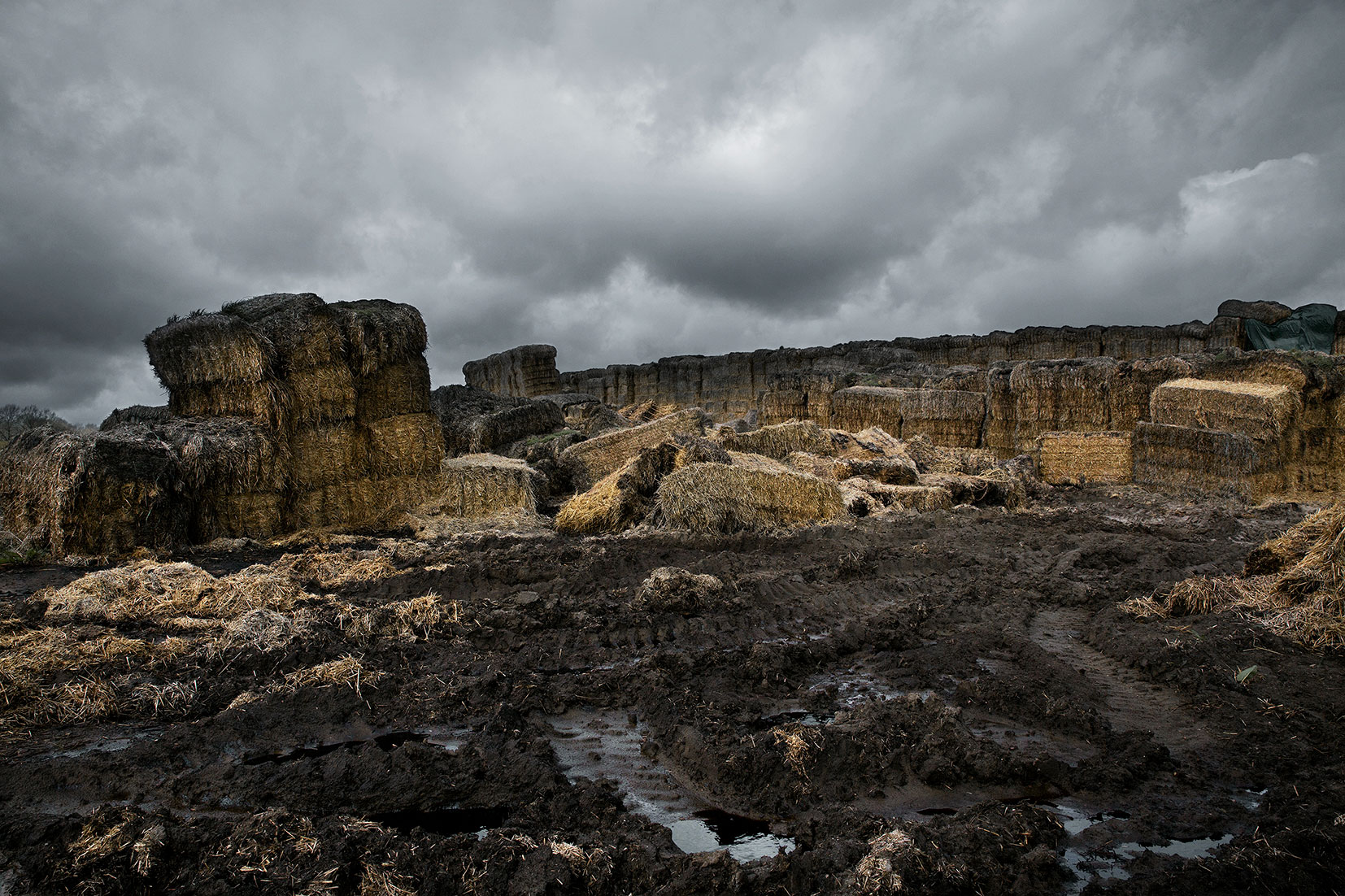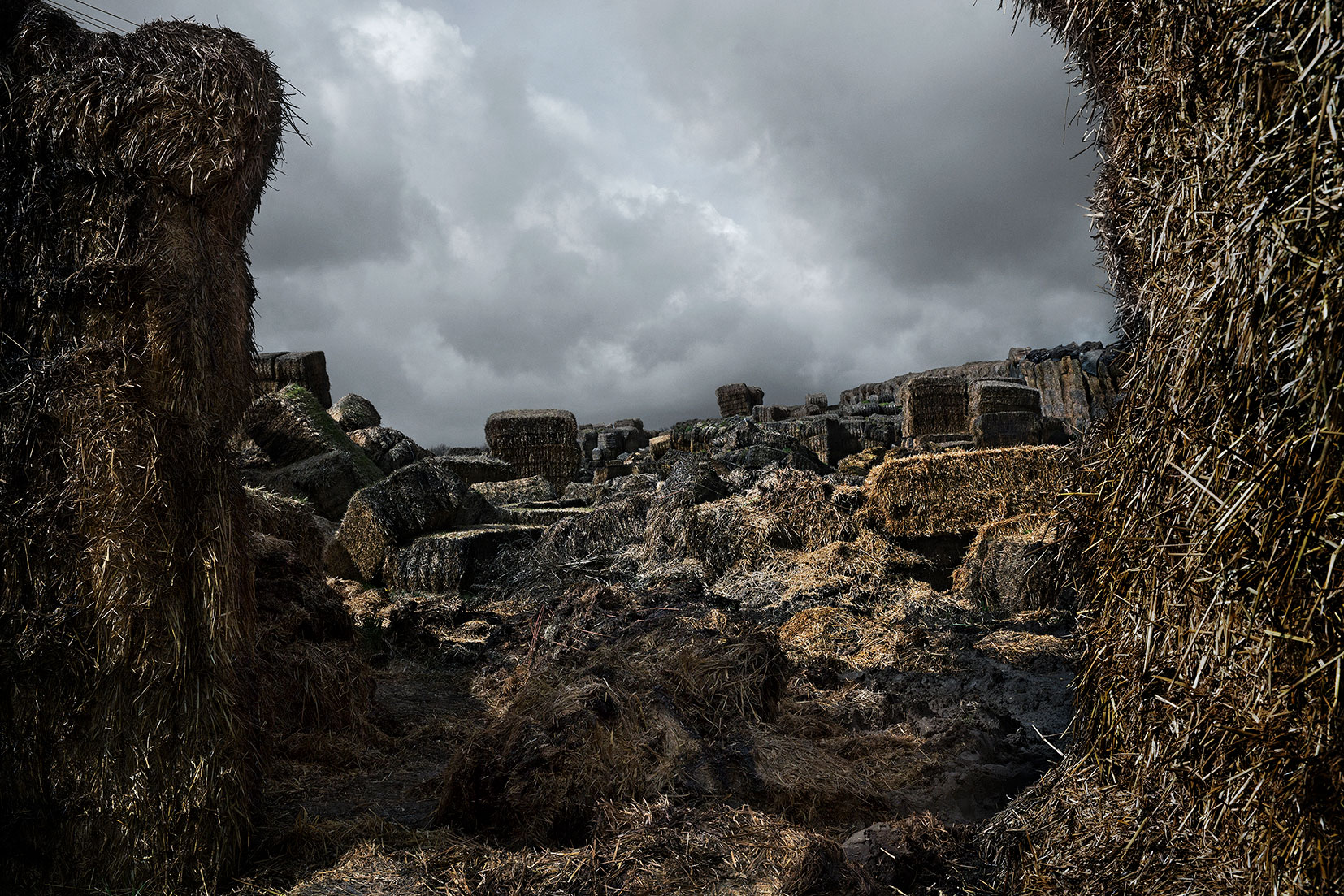Desolation Row
2018
In
the research on destruction and disappearance, on the subject’s fading and the
advent of object’s rule, Tania Mouraud created the new series of photographs Desolation Row. It extends and renews
the series Balafres (“Gashes”,
2014-2015) which unveiled the other side of an economic system that is driving
to ecological disaster in the gigantic lignite basins of western Germany,
turned into sinister moonscapes. In the new series, the artist chooses also the
subject behind the scene in a French countryside renowned for its pastoral
charm. Those fields of decaying haystacks were crafted by men and are now forsaken
by nature which reveals itself through photography as the melancholic waste of an
economic output. The orderly arrangement of chaos is all the more dramatic that
picture’s desaturation and the plane's structure merging earth and sky impart Desolation Row a pictorial plasticity
which is reminding the doomsday views of a desolate landscape by Anselm Kiefer.
When vanishing lines are visible, they lead towards an apocalyptical sky and
echo Saint John’s writing, which inspired as well Tania Mouraud in her series
of Word Search : “And a third of the
sun was struck, and a third of the moon, and a third of the stars, so that a
third of their light might be darkened, and a third of the day might be kept
from shining, and likewise a third of the night.” (Apocalypse, ESV, 8, 12).
Going beyond the metaphorical register, Desolation
Row is questioning social and economic entropy as it is showing the chaotic
underside of a system which is presumed to be unchanging and foolproof.
Matthias BARTHEL






